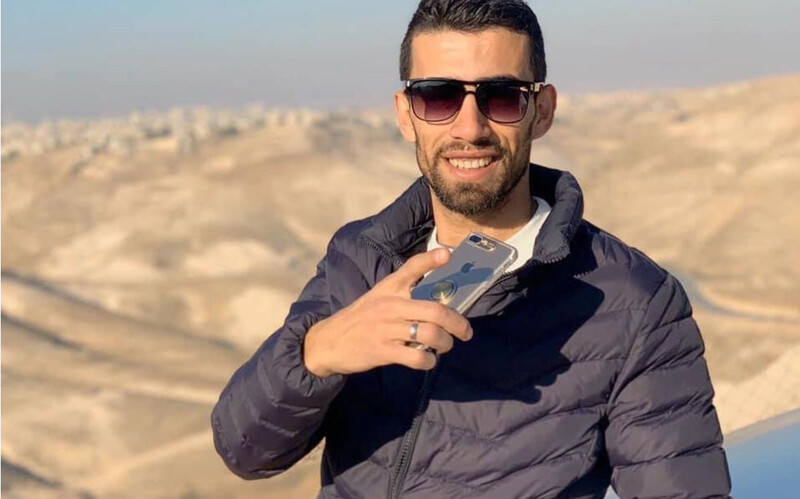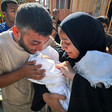Rights and Accountability 24 February 2021

Ahmad Erakat
Israeli occupation forces executed Ahmad Erakat while he posed no danger at a checkpoint last June, an investigation by the London-based research outfit Forensic Architecture supported by the Palestinian human rights group Al-Haq has concluded.
Erakat was denied medical care that could have saved his life and his body was treated in a degrading manner in the aftermath of his shooting, according to the report.
Israel continues to withhold Erakat’s body, preventing his family from holding a burial. Nor has Israel provided an autopsy report.
The 26-year-old was slain on 23 June after the car he was driving crashed into a booth, lightly injuring an Israeli soldier, at a checkpoint between the West Bank cities of Ramallah and Bethlehem.
The infrastructure of Israel’s military occupation and its settlement colonies are frequently the site of deadly violence against Palestinians.
The Israeli government immediately branded Erakat a terrorist, claiming that he had intentionally attacked soldiers with his car. That narrative was rejected by Erakat’s family, who said the young man was running errands before his sister’s wedding later that day.
The crash
The iconic Black intellectual and liberation activist Angela Davis narrates the investigation’s findings in an 18-minute video documentary.
Erakat’s killing coincided with the “global Black-led protest against police brutality” that erupted after the murder of George Floyd by a Minneapolis police officer, Davis notes in the video.
“It illustrates both the entangled struggles of Palestinian and Black liberation as well as the disposability of Black and Indigenous bodies in hyper-militarized settler colonies” like Israel and the US.
Forensic Architecture built a virtual 3D model of the checkpoint and reconstructed the path, speed and acceleration of Erakat’s car based on security camera footage released by Israel following his death.
That reconstruction demonstrates that Erakat did not accelerate his car, which was traveling down a slope that contributed to the car’s speed. The vehicle did not exceed 15 kilometers per hour – a fraction of its capacity.
A forensic collision expert consulted by Forensic Architecture said that the footage released by Israel indicates that Erakat may have been applying brakes on the car before impact.Israel has not opened a formal investigation despite evidence indicating that Erakat was not attempting to attack soldiers with his car.
Moreover, “it has not released the rest of the security footage, nor has it examined the car’s black box,” the Forensic Architecture report states.
The execution
Frame-by-frame analysis of the security camera footage released by Israel shows that soldiers fired six shots at Erakat within two seconds, immediately after he exited the vehicle.
The video shows that Erakat did not run towards soldiers, as the Border Police claimed in the wake of his slaying.Erakat, who was unarmed, was backing away from the soldiers with his hands up when they fired the first three bullets. He was already on the ground when soldiers fired the final three shots at him.
The Israeli military’s open-fire regulations state that live fire may only be used as a last resort if there is a life-threatening danger.
“Our analysis contradicts the army’s claim, showing that [Erakat] did not pose any immediate threat,” Forensic Architecture states.
Medical aid denied
Despite several security cameras at the checkpoint, Israel has provided no footage showing that Erakat was given first aid as it claims.
Videos and photos posted online show soldiers walking in close proximity to Erakat, who is seen still moving in one of the recordings, but no attempt is made to provide him with medical care.
An Israeli ambulance arrived within several minutes of the shooting and was soon followed by the arrival of a Palestinian ambulance, but the Palestinian medics were denied access to Erakat.
“From our far viewpoint, and from conversations with witnesses and the team, we understood that no kind of medical care was provided to him,” the Palestinian ambulance driver testified to Al-Haq.The Israeli ambulance left the checkpoint after 30 minutes, evacuating only an Israeli soldier who was injured when Erakat’s car hit the booth.
A photo taken minutes after the departure of the Israeli ambulance shows Erakat’s body in the same position as it was in video footage recorded while he was still seemingly alive.
“It is therefore extremely unlikely that [Erakat] was provided medical care — care that could have saved his life in those moments,” Forensic Architecture states.
Denial of first aid is “an act of ‘killing by time,’” the research group adds.
Degrading treatment
Erakat’s body was covered by a silver tarp some 45 minutes after he was shot, and later by a black sheet by the Israeli military’s bomb disposal unit.
After officers placed markers and took photos of Erakat’s body, photos found online show that he was left completely naked on the ground, surrounded by Israeli military and police personnel.
“We have not come across another case where a slain Palestinian was fully undressed on-site by the Israeli military,” the investigation states. Israeli soldiers are seen in photos and videos smoking just meters away from Erakat’s body.
Like dozens of other Palestinians slain during what Israel claims were attacks, Erakat’s body has also not been returned to his family.
Israel’s high court has sanctioned the withholding of alleged Palestinian assailants’ bodies so they may be used as bargaining chips during future negotiations.Last year, five Palestinians were shot and killed in what Israel claimed were car-ramming attacks at military checkpoints in the West Bank.
Dozens of human rights groups have told the United Nations that those who perpetrated the extrajudicial execution of Erakat must be held accountable.Palestinians living under Israeli apartheid rule are subjected to a “widespread and systematic shoot-to-kill policy,” the groups said.
The aim of this policy is to maintain “Israel’s apartheid regime of systematic racial oppression and domination over the Palestinian people,” the groups added, noting that Israeli forces failed to provide treatment to injured Palestinians on at least 114 occasions in 2019 alone.






Comments
Shooting
Permalink Frank Dallas replied on
And what is now on the consciences of the heroes who did the shooting? Tools of a vicious system they have to justify their murder to themselves. Murder it was. Cold blood. How do they sleep? What do you tell yourself to stay sane after you have shot an unarmed, solitary man with his hands in the air? Lady Macbeth and Raskolnikov did not bear a weight of guilt as heavy as the murders who did this. Do they tell themselves they were doing their duty? Who can escape the responsibility for their actions by such a claim? Were the clerks at Drancy who went on doing the work to send Jews to the gas chambers when Hitler was dead, doing their duty? Does that exonerate them? Those soldiers can never be free of their crime. Their lives are those of murderers. The State didn't kill Erakat, they did. They made themselves conduits of viciousness. They belong to history now, as does Erakat. He as the innocent victim, they as the conscienceless murderers. Posterity will not forget. The incident happened. One amongst many. But it can't be wiped out and their consciences can't be wiped clean. They won in the moment but over time they lose. Erakat rises to the status of a martyr and they sink to the level of despicable murderers, no better than thugs or gangsters. Such is what Israel makes of its young.